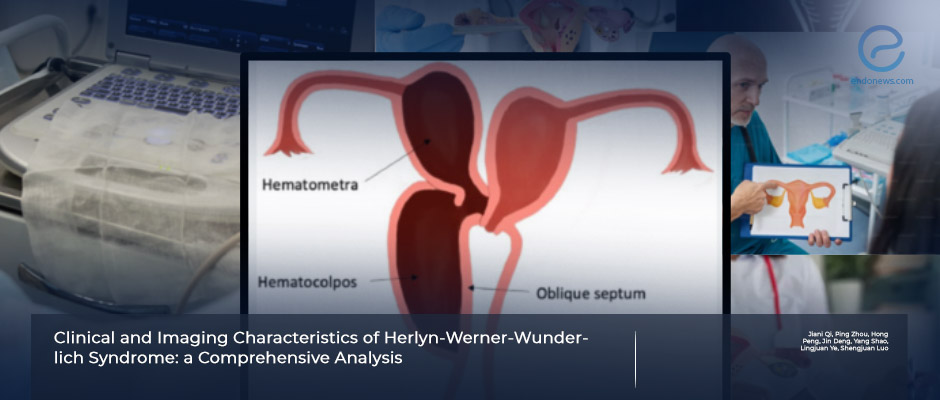Rare but clinically important diagnosis; Herlyn-Werner-Wunderlich syndrome
Jul 22, 2024
Herlyn-Werner-Wunderlich syndrome may coexist with pelvic endometriosis
Key Points
Highlights :
- Herlyn-Werner-Wunderlich syndrome (HWWS), first reported in 1922, is an anomaly consisting of uterine didelphys, blind hemivagina, and ipsilateral renal agenesis.
- Another nomenclature, namely “The Obstructed Hemivagina and Ipsilateral Renal Anomaly” (OHVIRA) was also suggested for this combination in 2007.
Importance:
- The incidence of HWWS has been reported as varying between 0.1 to 3.8% or higher.
What's done here :
- This is an observational case series of 85 cases of HWWS in ten years with retrospectively reviewed medical records.
Main key features :
- HWWS manifests as different combinations of the female genital tract and kidney anomalies and prompt diagnosis may avoid complications besides preserving fertility.
- Complete obstruction is significantly strongly associated with dysmenorrhea and endometriosis in the pelvis compared with incomplete obstruction (P < 0.05).
- Ultrasound is a preferable diagnostic modality for the diagnosis of HWWS being cost-effective without radiation exposure, providing valuable diagnostic images of the genital tract.
Limitations of the study :
- This study is a single-center retrospective study where a relatively small number of patients could be included.
- There are cases diagnosed and treated a long time ago, where surgical approaches could vary due to medical advances and also possible delayed diagnosis.
Lay Summary
The staff of the Department of Ultrasonography, Third Xiangya Hospital Central South University, Hunan, China have published their case series of the rare Herlyn-Werner-Wunderlich syndrome (HWWS) in a recent issue of Reproductive Sciences.
HWWS, is a rare genital tract anomaly first noticed in 1922, with uterine didelphys, blind hemivagina, and ipsilateral renal agenesis. Although Obstructed Hemivagina and Ipsilateral Renal Anomaly, (OHVIRA) was also suggested for this compilation in 2007, HWWS has gained wide acceptance.
The authors have revealed 85 cases having HWWS from June 2012 to December 2022 in The Third Xiangya Hospital and their medical records were retrospectively reviewed. A total of 27 patients had complete whereas 58 were categorised as having incomplete obstruction. The mean age at the start of symptoms and diagnosis of complete obstruction was significantly earlier than incomplete obstruction.
It is noteworthy that complete obstruction was statistically strongly associated with dysmenorrhea and endometriosis in the pelvis compared with incomplete obstruction. Fifty-six out of 85 patients (65.9%) had uterus didelphys and obstructed hemivagina; with twenty-two of 56 cases with micro-perforation in the vaginal septum and thirteen cases had communication in the cervix.
Ultrasound is an efficient clinical step chosen for the diagnosis of HWWS being cost-effective with no exposure to radiation, providing diagnostic images of the genital tract.
The authors conclude that further studies should be conducted to prevent selection and observational bias along with long-term prospective or randomized control trials for better managing HWWS so that early diagnosis and treatment may avoid complications and restore fertility.
Research Source: https://pubmed.ncbi.nlm.nih.gov/38907127/
Herlyn-Werner-Wunderlich syndrome HWWS female genital anomalies infertility kidney anomalies endometriosis

